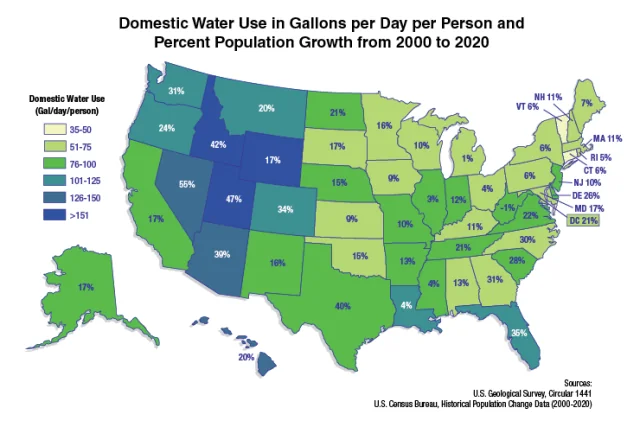Every morning, people across America wake up, brush their teeth, flush the toilet, take a shower, and make coffee — each of these tasks using some of the daily average water consumption, which according to a 2016 estimate by the Water Research Foundation, is approximately 58.6 gallons per capita per day (gpcd). And more than likely, the consumer doesn’t stop to think about how much water they are using, where it is coming from, and if there will be enough water supply five, 10, or 15 years from now. Meanwhile, those topics are the sole focus of water agencies. Every day, water agencies manage water supply based on resources and demand, consider how to improve water efficiency, and decide if conservation measures are needed. In states like California, Texas, and Florida, mandated water allocations and statewide water use objectives create additional challenges.
None of us have a crystal ball, but we know our drinking water is finite. While indirect potable use is increasingly deployed and direct potable use regulations were recently promulgated in California, these options are costly and may not be enough to solve future water shortages. This is why demand management may be the new water supply, requiring data such as unit water savings, cost to implement, timeline for savings, and several other assumptions to model water, energy, and cost savings can that be achieved through passive and active conservation methods.

